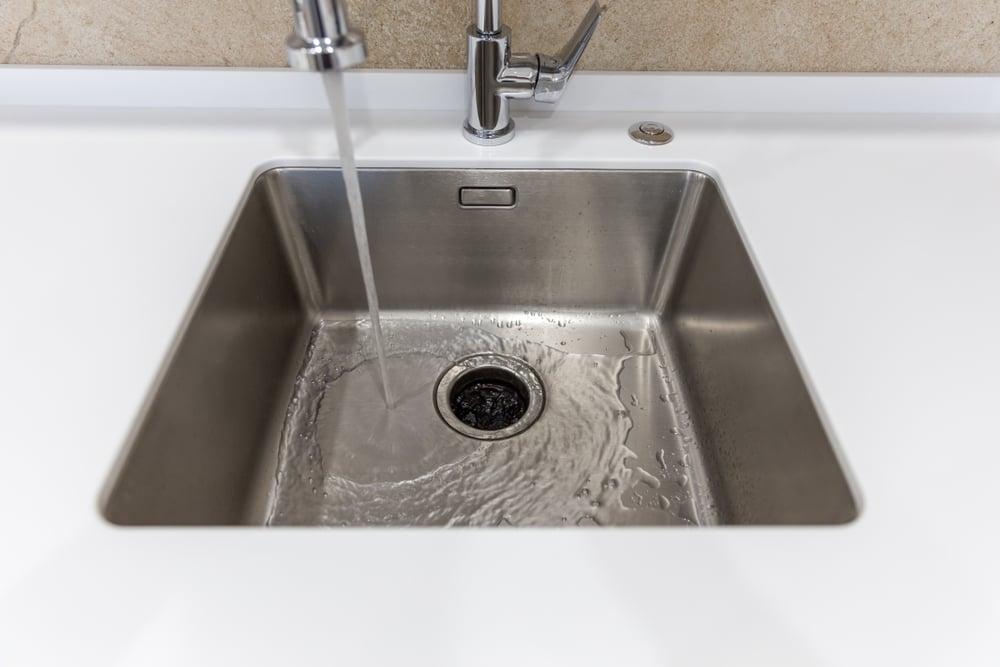Our Definitive Guide to Fixing a Leaky Waste Disposal Unit
Our Definitive Guide to Fixing a Leaky Waste Disposal Unit
Blog Article
Just how do you actually feel in relation to Why Is ?

Garbage disposals are necessary kitchen home appliances that help in taking care of food waste effectively. Nonetheless, a leaking garbage disposal can be an irritating and untidy issue to take care of. The good news is, many leakages can be repaired easily with a few basic actions. In this short article, we will certainly review just how to take care of a leaking garbage disposal efficiently.
Intro
Waste disposal unit are mounted under cooking area sinks and are designed to shred food waste right into smaller sized pieces, allowing it to travel through the pipes system quickly. While these gadgets are usually dependable, leaks can take place in time as a result of deterioration, loose links, or damages to the unit.
Usual Reasons For Leaks in Rubbish Disposals
Worn Seals and Gaskets
Seals and gaskets play a critical function in protecting against water from dripping out of the waste disposal unit. Gradually, these components can weaken, causing leakages around the disposal system.
Loose Connections
The links between the garbage disposal and the pipes system can come to be loosened with time, causing water to leakage out throughout procedure.
Splits or Openings in the Disposal System
Physical damages to the garbage disposal, such as cracks or openings in the housing, can likewise result in leaks.
Determining the Source of the Leakage
Before attempting to repair a leaking waste disposal unit, it is essential to identify the source of the leakage. This can commonly be done through visual assessment or by performing simple examinations.
Visual Inspection
Examine the waste disposal unit device carefully for any type of indicators of water leakage. Pay close attention to areas around seals, gaskets, and connection points.
Testing for Leaks
One way to examine for leaks is by running water with the disposal device and looking for any visible indications of leak.
Devices and Materials Needed for Taking Care Of a Dripping Garbage Disposal
Before beginning the fixing procedure, gather the essential tools and products, including a screwdriver, flexible wrench, plumbing's putty, substitute seals or gaskets, and epoxy or patching material for repairing fractures or holes.
Step-by-Step Overview to Fixing a Leaking Garbage Disposal
Turn Off the Power
Before trying any kind of repairs, guarantee that the power to the garbage disposal system is turned off to avoid the danger of electrical shock.
Find the Leakage
Determine the specific place of the leak and figure out the cause.
Tighten Connections
Utilize a wrench to tighten any kind of loosened connections in between the disposal system and the pipes system.
Replace Seals or Gaskets
If the leak results from worn seals or gaskets, eliminate the old parts and replace them with brand-new ones.
Patching Cracks or Holes
For cracks or openings in the disposal unit, usage epoxy or a suitable patching material to secure the damaged location.
Testing the Garbage Disposal After Repair Service
Once the repair service is total, check the garbage disposal by running water through it to make sure that the leakage has been dealt with.
Preventive Upkeep Tips to Avoid Future Leakages
To stop future leaks, it is important to carry out regular maintenance on your waste disposal unit. This consists of keeping it clean, staying clear of placing non-food things or difficult items down the disposal, and occasionally looking for leaks or other problems.
Conclusion
Finally, repairing a leaking waste disposal unit is a reasonably simple procedure that can be completed with basic tools and products. By adhering to the steps laid out in this article and exercising precautionary upkeep, you can maintain your garbage disposal in good working condition and stay clear of expensive repair services in the future.
HERE’S HOW TO FIX YOUR GARBAGE DISPOSAL
WHAT TO DO IF SOMETHING IS STUCK IN YOUR GARBAGE DISPOSAL
If the impeller won’t turn, there’s probably something stuck in the disposal. It could be a steak bone or peach pit, although plumbers report pulling all sorts of inappropriate objects out of disposals, such as bottle caps or aluminum foil. Make sure power to the disposal is off, and look inside to see if you can see the source of the jam.
Never stick your fingers in a disposal. Pull out anything you see with tongs or pliers.
If the disposal still won’t work, it may be time to call a plumber or consider buying a new disposal. GEM Plumbing & Heating is here for all of your garbage disposal needs.
WHAT TO DO IF YOUR GARBAGE DISPOSAL DRAIN IS CLOGGED
Take everything out from underneath your sink and put a bucket or other container under your disposal to catch any water that drains out. Disconnect your disposal from the power supply. If it’s plugged into a wall outlet, unplug it. If it’s hardwired into an electrical box, go to the electrical panel and turn off the breaker for the disposal. Pour ¼ cup of baking soda into the drain, followed by ½ cup of white vinegar. Give the solution a few minutes to fizz and do its work. Look into the disposal with a flashlight to see if you can see an object that might be causing the clog. If you see it, remove it using tongs or pliers. MORE TIPS ON DEALING WITH A CLOGGED GARBAGE DISPOSAL
Never use drain cleaner in a garbage disposal. It can damage the plastic parts inside the disposal. You can also be splashed with the caustic liquid while working to clear the clog. Beware! Never stick your fingers into a garbage disposal. Trust us — not a good idea. In many instances, your dishwasher drains through your garbage disposal. This allows the disposal to grind any large food particles that may be drained out of your dishwasher. There are some jurisdictions, however, where the plumbing code prohibits such a connection. WHAT TO DO WHEN YOUR DISHWASHER DRAINS THROUGH THE DISPOSAL
Run some water in the sink so your plunger has at least a ½-inch of water to create a seal and plunge vigorously up and down several times. You may need to repeat this several times. Run hot water down the drain to clear any residue that remains.

I discovered that blog posting on Why Is when doing a lookup on the search engines. Are you aware of someone else who is interested in the subject? Feel free to share it. Thank you for going through it.
Source Report this page